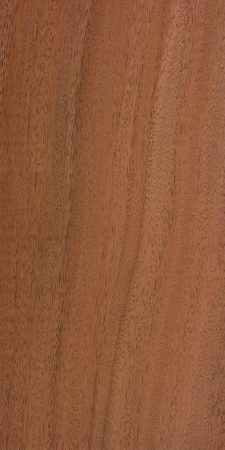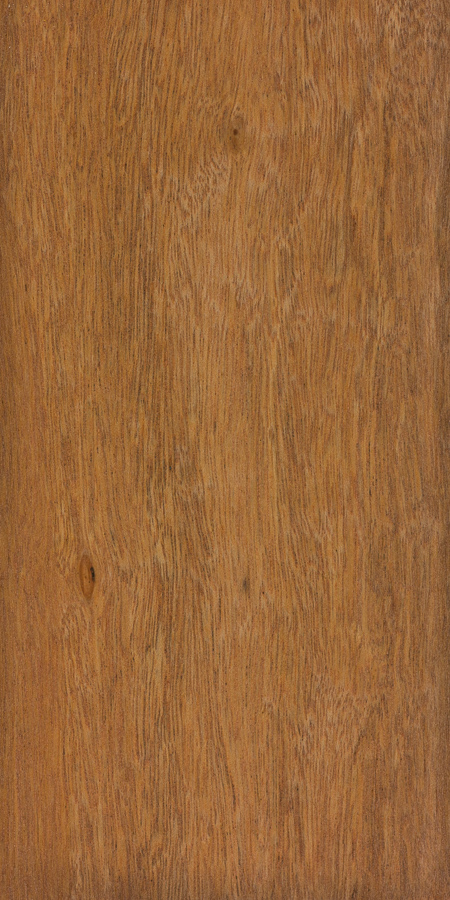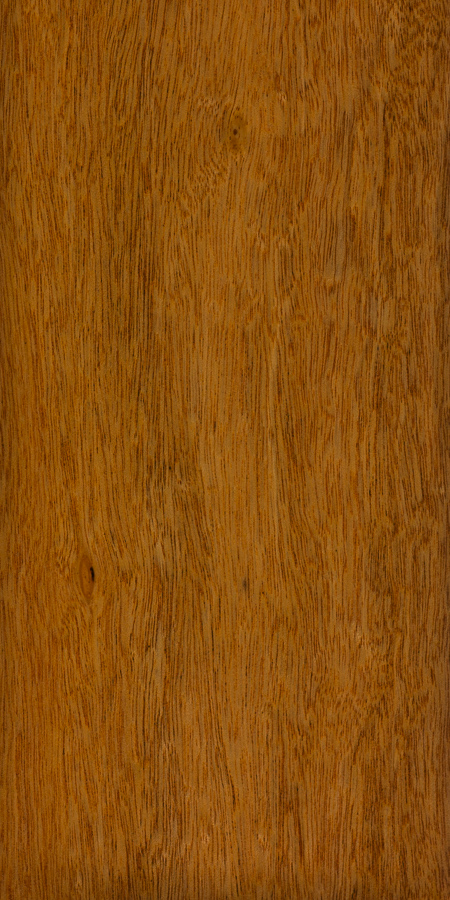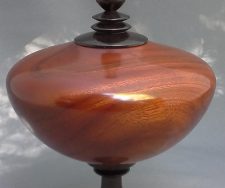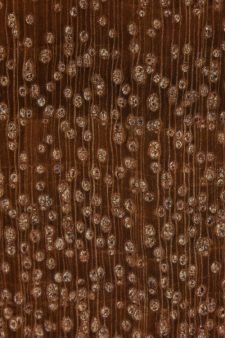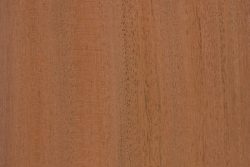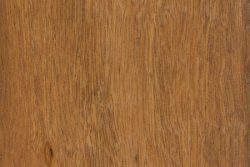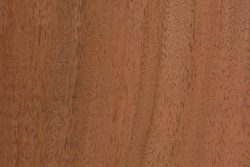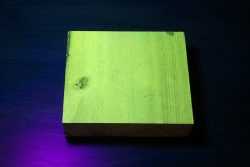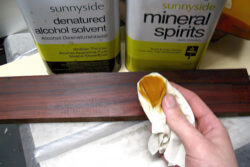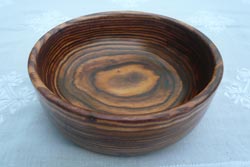DATA SOURCE(S): 27,36
Common Name(s): Soto, barauna, quebracho colorado
Scientific Name: Schinopsis brasiliensis
Distribution: South America (primarily Brazil, Bolivia, and Paraguay)
Tree Size: 40-50 ft (12-15 m) tall,
1-2 ft (.3-.6 m) trunk diameter
Average Dried Weight: 79.9 lbs/ft3 (1,280 kg/m3)
Specific Gravity (Basic, 12% MC): 1.14, 1.28
Janka Hardness: 3,650 lbf (16,240 N)
Modulus of Rupture: 21,560 lbf/in2 (148.7 MPa)
Elastic Modulus: 2,276,000 lbf/in2 (15.69 GPa)
Crushing Strength: 11,850 lbf/in2 (81.7 MPa)
Shrinkage: Radial: 5.3%, Tangential: 10.3%,
Volumetric: 16.3%, T/R Ratio: 1.9
Color/Appearance: Heartwood color typically a light to medium reddish brown, sometimes with darker blackish streaks. Color darkens upon prolonged exposure to light. Pale yellow sapwood distinct from heartwood, though transition is gradual. Can have moderate ribbon figure on quartersawn surfaces due to interlocked/roey grain. Overall appearance can resemble genuine mahogany (Swietenia macrophylla).
Grain/Texture: Quebracho has a fine, uniform texture with a high natural luster. Grain tends to be irregular, roey, and interlocked.
Rot Resistance: Quebracho is rated as very durable, and is also resistant to insect attacks. Quebracho also has good weathering characteristics.
Workability: Difficult to work on account of its density and irregular grain. High cutting resistance, as well as pronounced blunting effect on cutters. Dries slowly—and tends to crack, check, and warp while drying. Turns and finishes well, and also able to take on a high natural polish without any finishing agents.
Odor: There is no characteristic odor associated with this wood species, though it is reported to have a bitter taste.
Allergies/Toxicity: Although severe reactions are quite uncommon, quebracho has been reported as a sensitizer. Usually most common reactions include skin and respiratory irritation, as well as nausea. See the articles Wood Allergies and Toxicity and Wood Dust Safety for more information.
Pricing/Availability: Very seldom available in North America, quebracho is much more commonly harvested and processed for its natural tanins, or minimally-processed and used locally in heavy construction. Small log sections, craft blanks, or sawn lumber can sometimes be found on a limited basis. Expect prices to be in the medium to high range for an imported hardwood.
Sustainability: Quebracho is not listed in the CITES Appendices, and the IUCN reports that Schinopsis brasiliensis is a species of least concern. However, this IUCN evaluation dates back to 1998 and is in need of updating.
Common Uses: Due its difficult workability, quebracho tends to be minimally processed. Local uses include heavy construction timbers, railroad cross-ties, and fence posts. When exported, uses include furniture, carvings, and turned objects.
Comments: Unlike the other two primary commercial Schinopsis species yielding quebracho wood (S. balansae and S. lorentzii), soto primarily occurs in Brazil, hence its specific epithet: brasiliensis. Accordingly, many of its common names are Portuguese rather than Spanish.
In comparing this Brazilian species to the other two commercial species, Record and Hess comment that “The wood is practically identical in appearance and structure with the Quebracho of Argentina.”[1]Record and Hess. Timbers of the New World. p. 48
Images: Drag the slider up/down to toggle between raw and finished wood.
A special thanks to John Volcko for providing the turned photo of this wood species.
Identification: See the article on Hardwood Anatomy for definitions of endgrain features.
Porosity: diffuse porous; growth rings generally not visible, though occasionally discernible due to subtle change in color of woof fibers around the annual growth ring boundaries
Arrangement: solitary and radial multiples
Vessels: medium to large, few to moderately numerous; tyloses common
Parenchyma: vasicentric and unilateral
Rays: narrow width, normal spacing; rays generally not visible without magnification
Lookalikes/Substitutes: Superficially, quebracho has an overall appearance that’s similar to various types of mahogany. However, quebracho’s very high density should serve to separate it from nearly all lookalikes.
Notes: Heartwood fluoresces a yellowish green under a blacklight.
Related Content:

